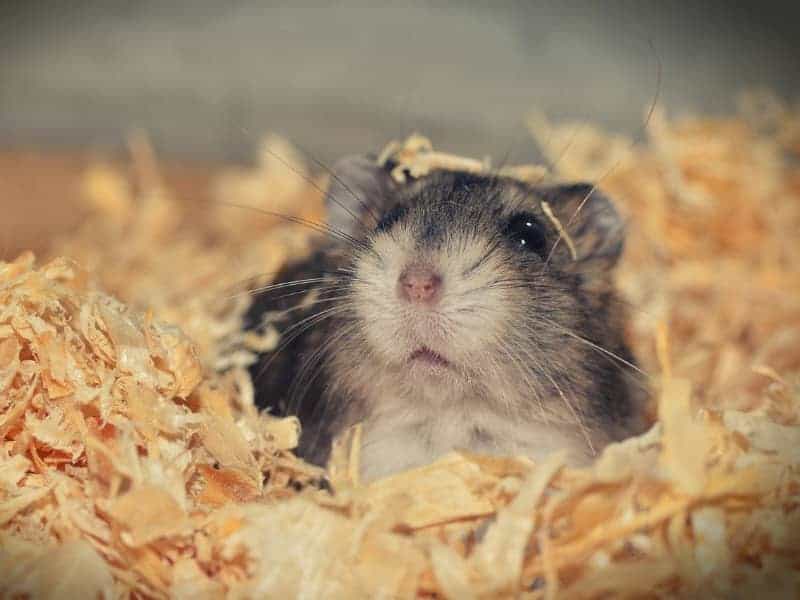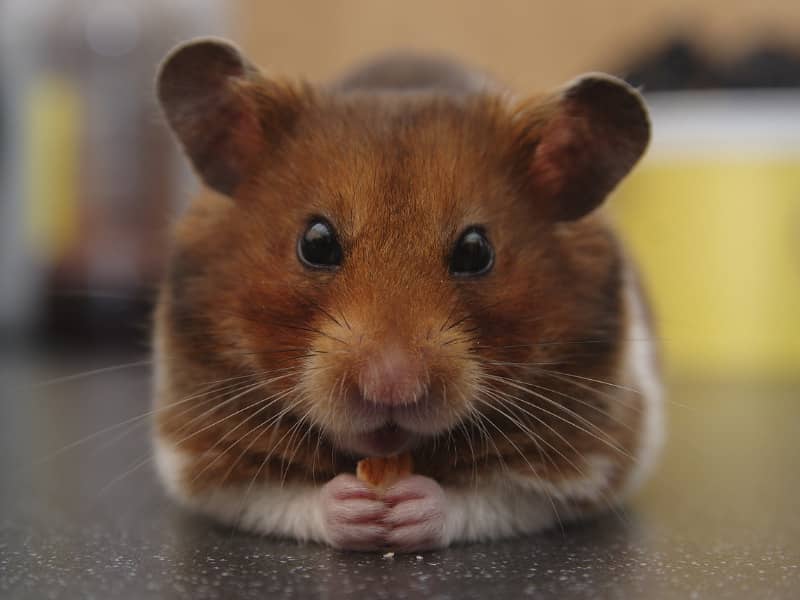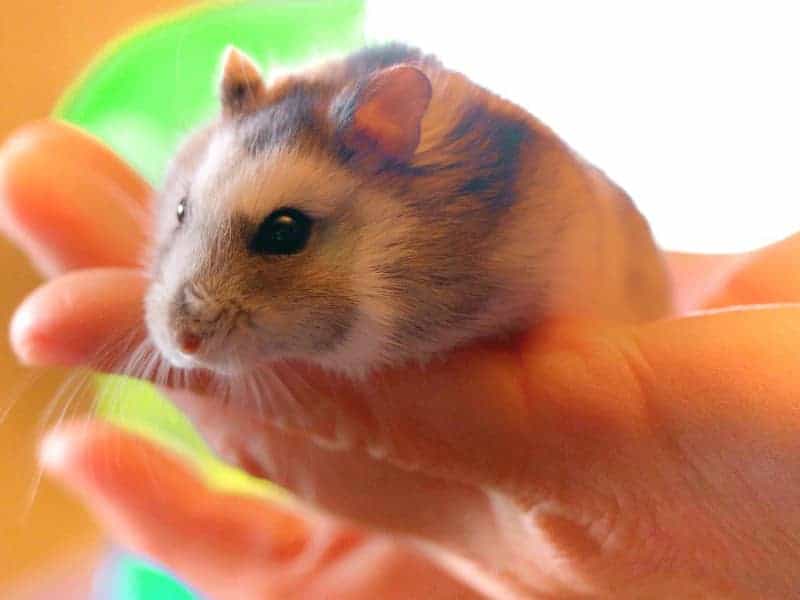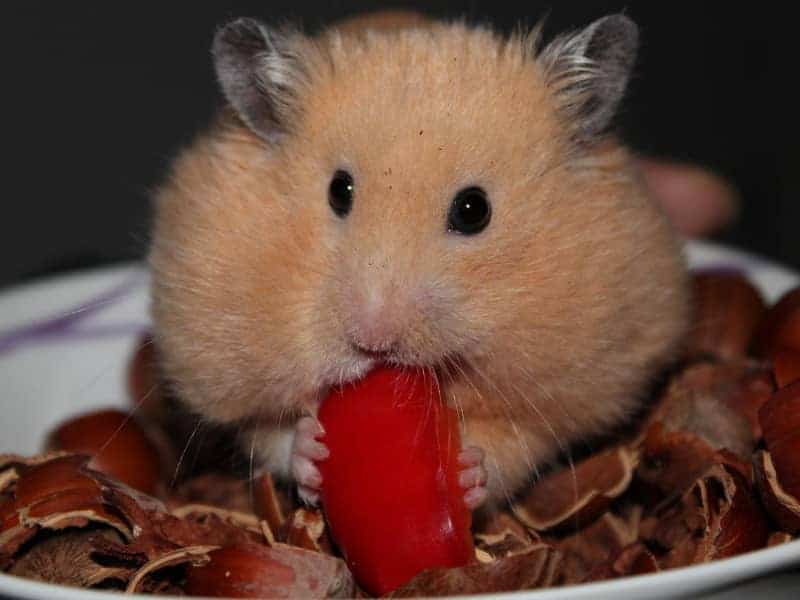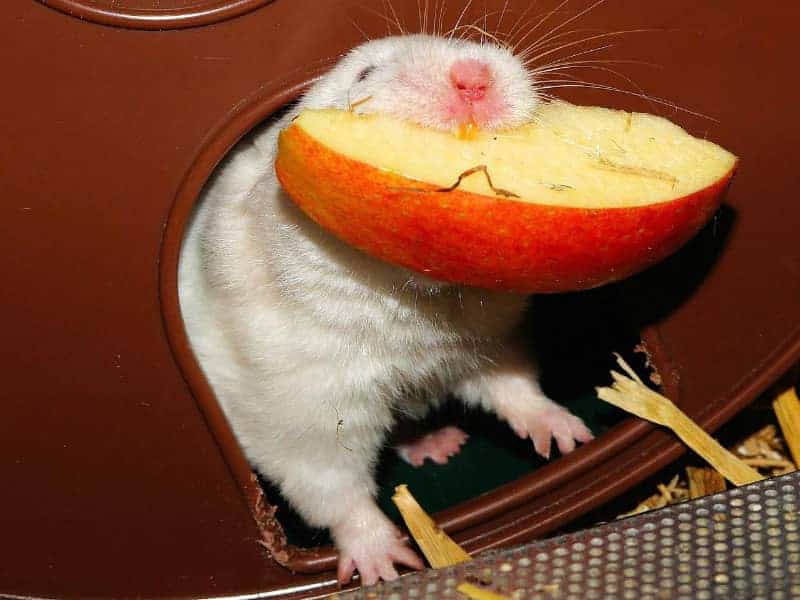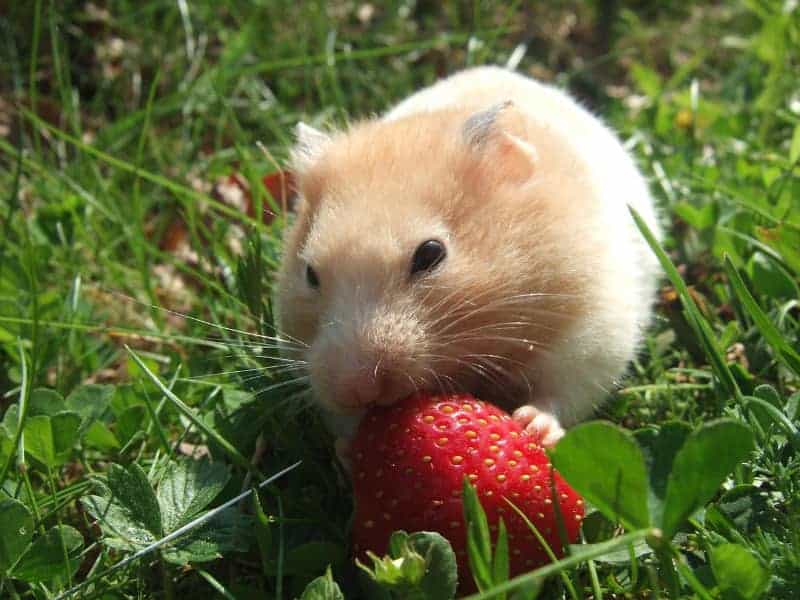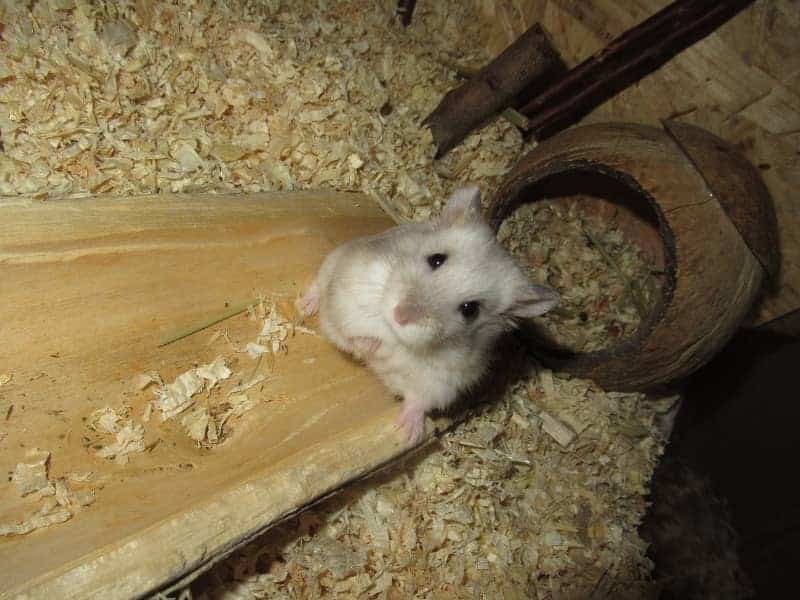
Hamster bedding
Anyone who has a hamster, of course, wants a hamster to be kept as species-appropriate as possible. This includes having the right bedding in his living space. But not only the right bedding, but also the height is important to allow the hamster a comfortable life. After all, just like in the wild, he wants to dig and dig his tunnels.
What to look for in hamster bedding?
The good first. You can use commercial small animal litter in combination with straw or hay for almost any hamster. This involves piling up the small animal litter in layers combined with straw/hay. Here it is important to note the bedding height. This is because dwarf hamsters and golden hamsters need different heights to be able to dig their tunnels in the litter.
For a golden hamster, you should pile up at least 30 cm of bedding. The bottom layer should be about 8 cm of small animal litter. The second layer should consist of 8-10 cm straw/hay and then fill up with small animal litter to a total height of 30 cm.
Due to its size, the dwarf hamster requires a lower height for bedding. The total height should be between 20 and 25 cm. Here, too, you start with small animal litter and a height of about 5-6 cm. Then you fill a layer of straw / hay with 5-7 cm thickness and fill the rest also with small animal litter.
The layering of the different materials provides stability so that the tunnels your hamster digs in the bedding don't collapse as quickly. The stability aspect is also why we recommend this combination. However, it is less suitable for hamsters with long fur, like the Teddy Hamster.
What are the types of bedding?
The best known two, we have already introduced the small animal litter and straw or hay. But there are several other types that can be used. We will briefly discuss the most important ones here.
Small animal litter
This variant is most often used and also recommended by us. The small animal litter consists of soft wood chips. These are sometimes coarser and sometimes finer, this depends on the manufacturer and here you have to look a little, what is the best solution for your animal. So that you have a comparison, you should go to a large pet store to see was the differences.
These softwood shavings are made of coniferous wood and have good absorbency, so it is not a problem if your pet urinates on the material. When buying, it is important to make sure that no odorants are added, because this can irritate the respiratory tract and the eyes of your rodent.
Hay
Hay can be used as an intermediate layer for bedding or also as a material for nest building and padding for the sleeping place. The hay is available in many different qualities. Sometimes it is offered as pure hay, but regularly also as a mixture. Then flowers and sometimes also fruit are mixed in it. It is best to use pure hay, possibly with flowers, but never with fruit. The hay you can often, as well as the small animal litter in the supermarket buy cheap.
Straw/straw chaff
The straw consists of chopped straw, because unbroken straws would be too long. This breakage makes the straw soft and suitable for your hamster to create tunnels in it. Chopped straw is available in well-stocked pet stores and online. You can often get it from online stores that also offer feed for horses.
Hemp litter
Hemp litter takes a special position, because it is suitable only for teddy hamsters with very long and fine fur. It is unfortunately expensive, but the Teddy hamsters can get problems with other litter, because it would quickly get caught in their fur. In addition, it is not suitable for building corridors in it, as it does not build up stability. The hemp litter is available in well-stocked pet stores.
What must be considered when filling the hamster bedding?
As we have already described above, the minimum height for the dwarf hamster of 20 cm and for the golden hamster of 30 cm must be observed. Only then can the hamsters dig proper tunnels there. It is important that there is as large an area as possible of the bedding. So it brings nothing to fill up a tower with a base of 30 cm edge length and one meter height.
Hamsters prefer to dig long and shallow tunnels to stay in and deposit their stuff. When filling, you should work in a layer system as described above. Each layer should be pressed down firmly after filling so that no air holes are created. You must note that the centimeters described above should be present after compression.
Cleaning the hamster bedding
It goes without saying that the bedding needs to be cleaned occasionally. When doing this, you should make sure that you only remove and refill a portion of it at a time. The reason for this is that your hamster needs to smell itself. If you replace the entire bedding, your pet will think it has been abandoned in a new territory.
This can lead to a great stress situation and should be avoided. Therefore, always clean the bedding superficially as needed, for most animals every 4-8 weeks is sufficient. Visible traces of feces or lumps formed by urination should be removed every one or two days. To keep the bedding clean longer, it is recommended to set up a hamster toilet.
This should be made of ceramic and not plastic, because many a rampaging hamster disassembles such a toilet in no time. The ceramic versions are also easy to clean and can not be easily carried away by your animal. These toilets are filled with chinchilla sand. This clumps when your hamster has left his business and can then, as with a cat toilet simply be disposed of.
Author

-
Garden animal - A life with nature
Welcome to my animal blog! My name is Dirk and I am happy to take you on my journey through the fascinating world of animals and gardening.
Born 54 years ago, I have had an insatiable curiosity for the animal world around me since childhood. Although I have moved professionally in other industries, my true passion has always been animals and nature. It is remarkable how a small garden has become such an important part of my life.
Many of my fondest memories are associated with the animals that share our home. Whether it's the curious squirrels that scurry across the trees in the morning, the colorful variety of birds that visit our feeders, or the busy bees and butterflies that pollinate our flowers, every moment with them is invaluable to me.
This blog is my contribution to share my experiences, discoveries and insights with like-minded people. Here I will share stories of unforgettable encounters with animals, give tips on gardening and creating wildlife-friendly habitats, and take you on my journeys through nature.
Thank you so much for being here!
Cordial,
Dirk aka garden animal
Last posts
- 27. February 2024PetsVeganes Hundefutter – Grün und Gesund?
- 18. January 2024ChickensOregano für Hühner
- November 27, 2023HamsterDiurnal hamsters
- November 24, 2023HamsterHamster hammock

